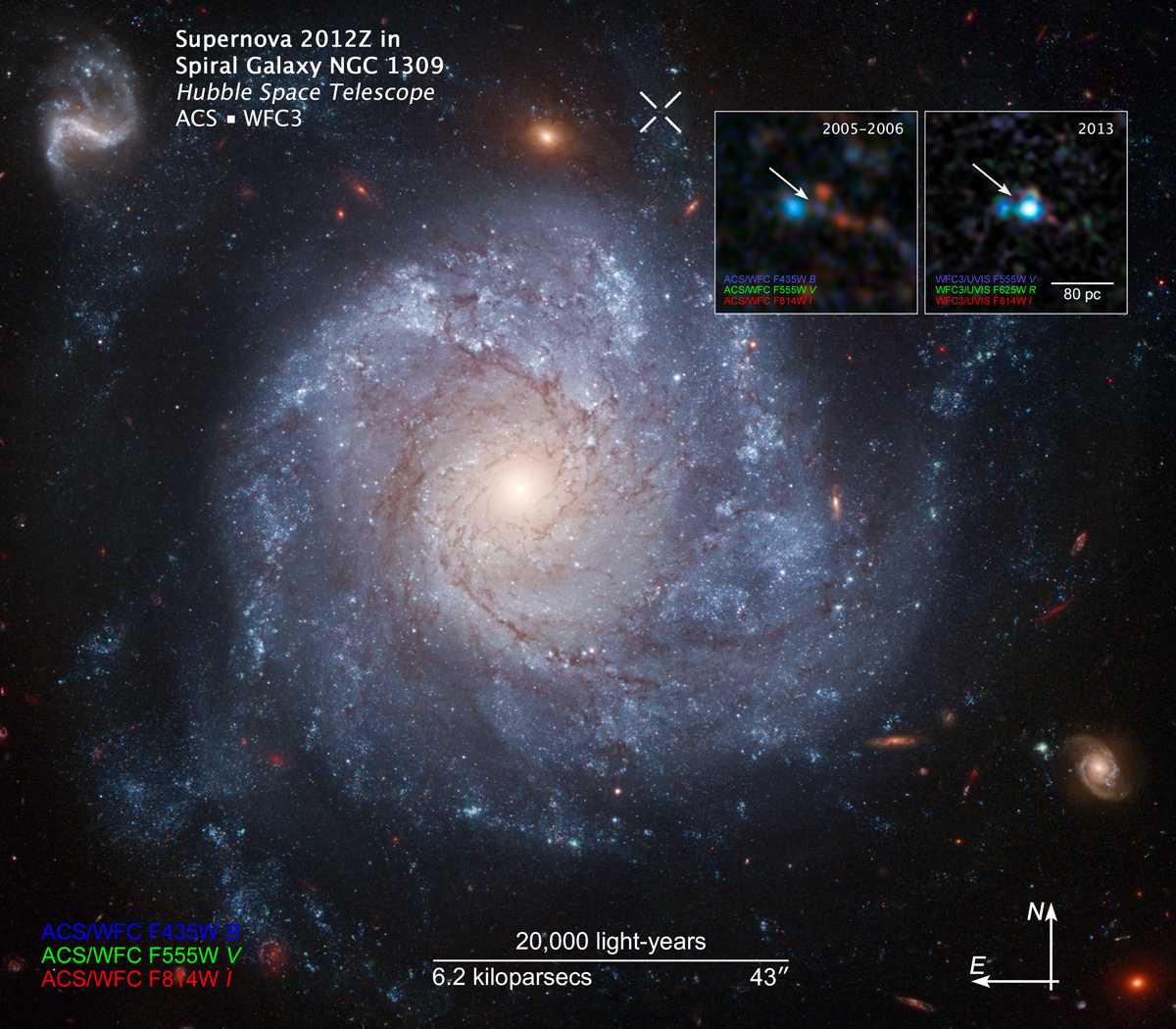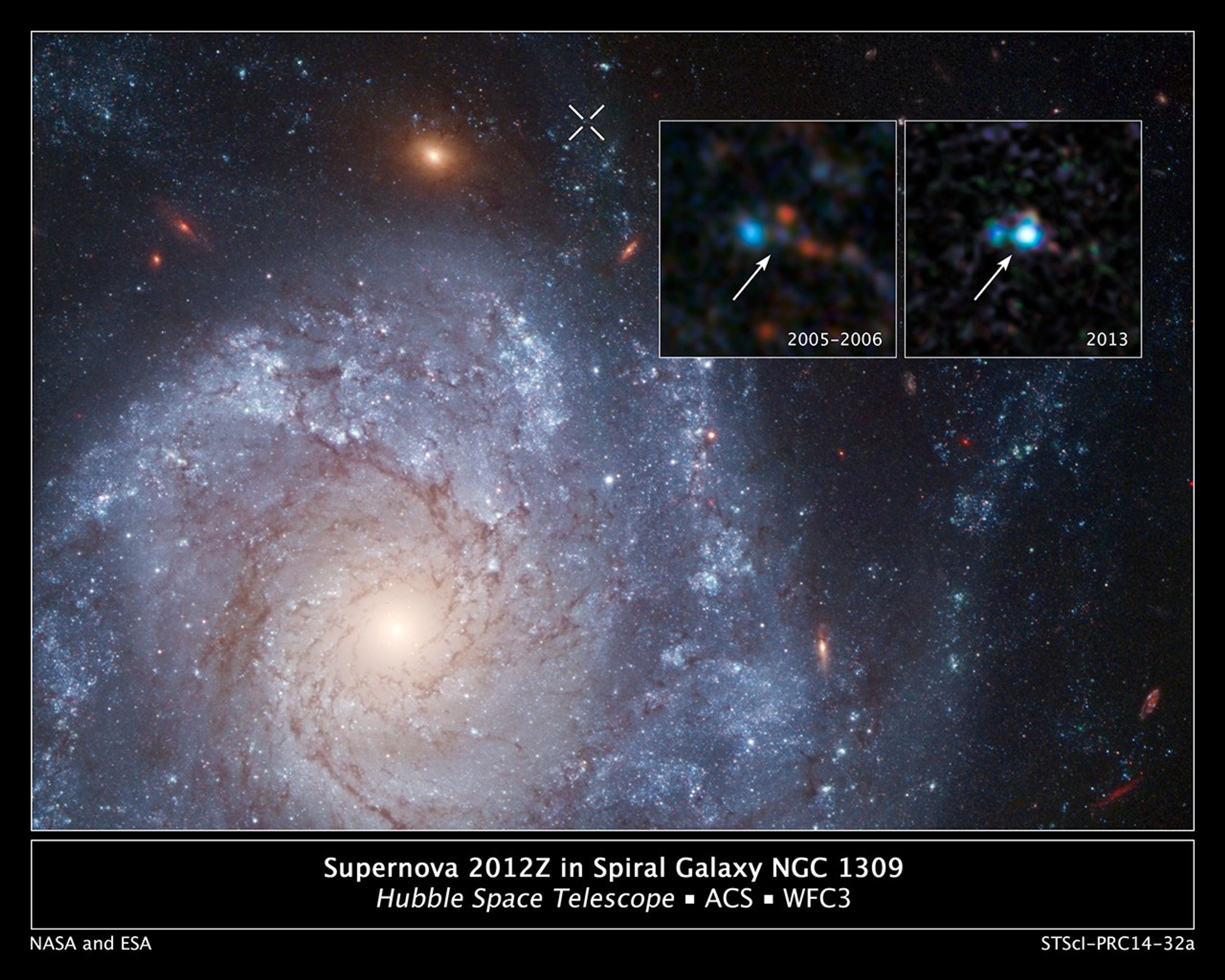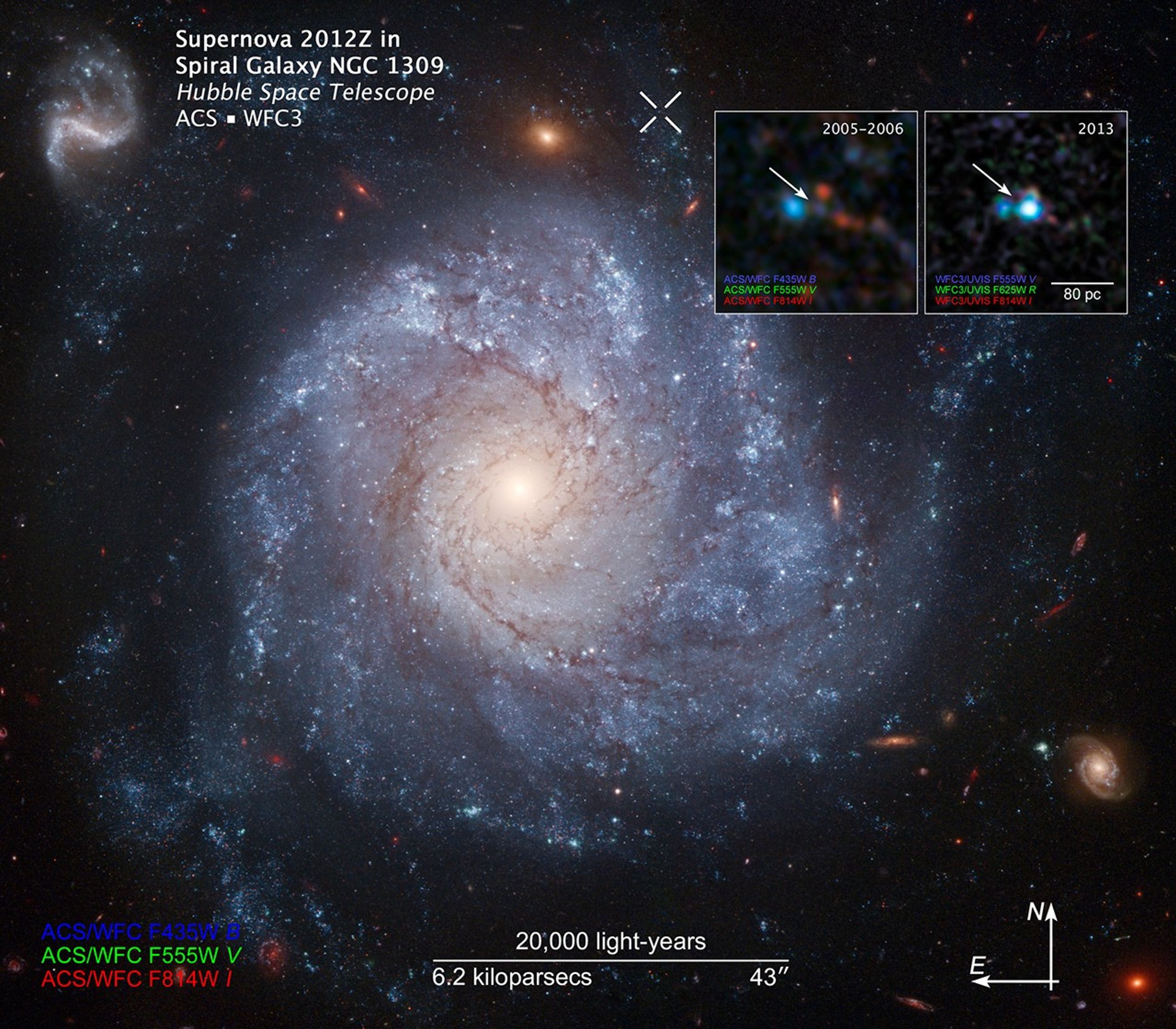1 min read
Spiral Galaxy NGC 1309

About the Object
- R.A. PositionR.A. PositionRight ascension – analogous to longitude – is one component of an object's position.03h 22m 5.27s
- Dec. PositionDec. PositionDeclination – analogous to latitude – is one component of an object's position.-15° 23' 49.33"
- ConstellationConstellationOne of 88 recognized regions of the celestial sphere in which the object appears.Eridanus
- DistanceDistanceThe physical distance from Earth to the astronomical object. Distances within our solar system are usually measured in Astronomical Units (AU). Distances between stars are usually measured in light-years. Interstellar distances can also be measured in parsecs.100 million light-years (30 Megaparsecs)
About the Data
- Data DescriptionData DescriptionProposal: A description of the observations, their scientific justification, and the links to the data available in the science archive.
Science Team: The astronomers who planned the observations and analyzed the data. "PI" refers to the Principal Investigator.Hubble data for this release were obtained from the following proposals: 10497, 10802, 11570, and 12880: A. Riess (JHU/STScI) et al. 10711: K. Noll (NASA/GSFC) et al. 12913: S. Jha (Rutgers University) et al. The science team comprises: C. McCully and S. Jha (Rutgers University), R. Foley (University of Illinois, Urbana-Champaign), L. Bildsten (University of California, Santa Barbara/ Kavli Institute for Theoretical Physics) W.-f. Fong and R. Kirshner (Harvard-Smithsonian/CfA), G. Marion (University of Texas, Austin and Harvard-Smithsonian/CfA), A. Riess (JHU/STScI) and M. Stritzinger (Aarhus University, Denmark). - InstrumentInstrumentThe science instrument used to produce the data.HST>ACS/WFC
- Exposure DatesExposure DatesThe date(s) that the telescope made its observations and the total exposure time.2005 - 2006
- FiltersFiltersThe camera filters that were used in the science observations.F435W (B) F555W (V), and F814W (I)
- Object NameObject NameA name or catalog number that astronomers use to identify an astronomical object.NGC 1309
- Object DescriptionObject DescriptionThe type of astronomical object.Supernova in Spiral Galaxy
- Release DateAugust 6, 2014
- Science ReleaseNASA’s Hubble Finds Supernova Star System Linked to Potential ‘Zombie Star’
- Credit

Color Info
Color InfoA brief description of the methods used to convert telescope data into the color image being presented.
This image is a composite of separate exposures acquired by the ACS/WFC instrument. Several filters were used to sample various wavelengths. The color results from assigning different hues (colors) to each monochromatic (grayscale) image as follows: Blue: F435W (B) Green: F555W (V) Red: F814W (I)

Compass and Scale
Compass and ScaleAn astronomical image with a scale that shows how large an object is on the sky, a compass that shows how the object is oriented on the sky, and the filters with which the image was made.
Related Images & Videos

Supernova 2012Z in Spiral Galaxy NGC 1309
The inset panel is a pair of Hubble Space Telescope images of the spiral galaxy NGC 1309 that were taken before and after the appearance of Supernova 2012Z, in the outskirts of the galaxy. The white X-shaped feature at the top of the image of the galaxy marks the location of the...
Share
Details
Last Updated
Aug 17, 2025
Contact
Media
Claire Andreoli
NASA’s Goddard Space Flight Center
Greenbelt, Maryland
claire.andreoli@nasa.gov


































